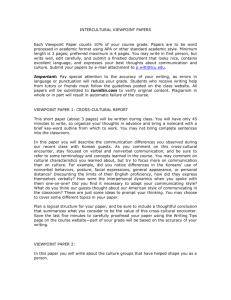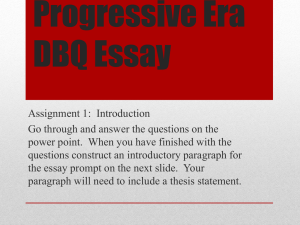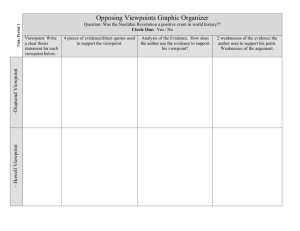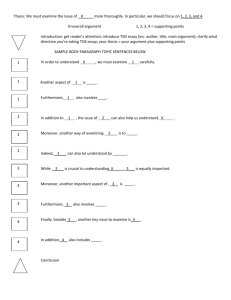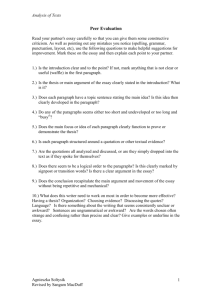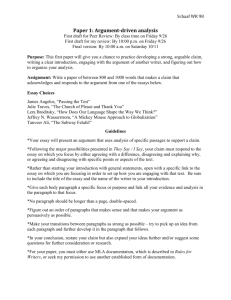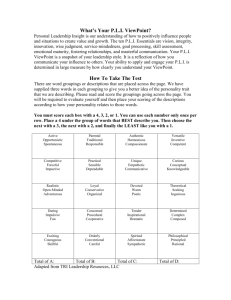Persuasive Essay Structure (7th & 8th Grade ELA)
advertisement
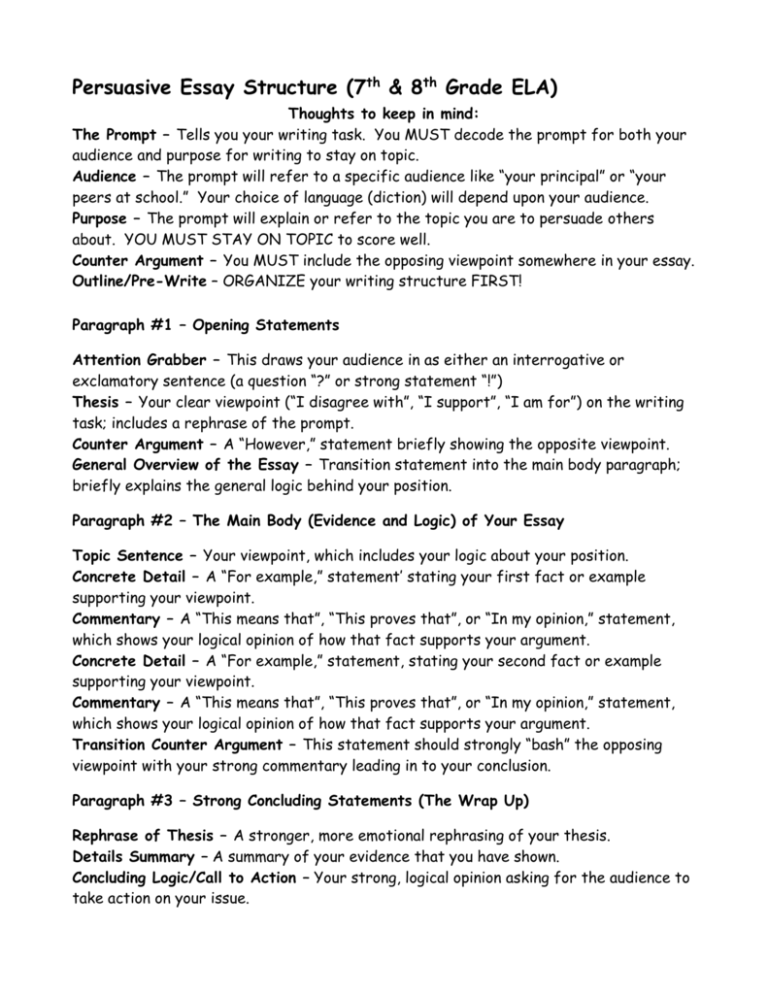
Persuasive Essay Structure (7th & 8th Grade ELA) Thoughts to keep in mind: The Prompt – Tells you your writing task. You MUST decode the prompt for both your audience and purpose for writing to stay on topic. Audience – The prompt will refer to a specific audience like “your principal” or “your peers at school.” Your choice of language (diction) will depend upon your audience. Purpose – The prompt will explain or refer to the topic you are to persuade others about. YOU MUST STAY ON TOPIC to score well. Counter Argument – You MUST include the opposing viewpoint somewhere in your essay. Outline/Pre-Write – ORGANIZE your writing structure FIRST! Paragraph #1 – Opening Statements Attention Grabber – This draws your audience in as either an interrogative or exclamatory sentence (a question “?” or strong statement “!”) Thesis – Your clear viewpoint (“I disagree with”, “I support”, “I am for”) on the writing task; includes a rephrase of the prompt. Counter Argument – A “However,” statement briefly showing the opposite viewpoint. General Overview of the Essay – Transition statement into the main body paragraph; briefly explains the general logic behind your position. Paragraph #2 – The Main Body (Evidence and Logic) of Your Essay Topic Sentence – Your viewpoint, which includes your logic about your position. Concrete Detail – A “For example,” statement’ stating your first fact or example supporting your viewpoint. Commentary – A “This means that”, “This proves that”, or “In my opinion,” statement, which shows your logical opinion of how that fact supports your argument. Concrete Detail – A “For example,” statement, stating your second fact or example supporting your viewpoint. Commentary – A “This means that”, “This proves that”, or “In my opinion,” statement, which shows your logical opinion of how that fact supports your argument. Transition Counter Argument – This statement should strongly “bash” the opposing viewpoint with your strong commentary leading in to your conclusion. Paragraph #3 – Strong Concluding Statements (The Wrap Up) Rephrase of Thesis – A stronger, more emotional rephrasing of your thesis. Details Summary – A summary of your evidence that you have shown. Concluding Logic/Call to Action – Your strong, logical opinion asking for the audience to take action on your issue.


